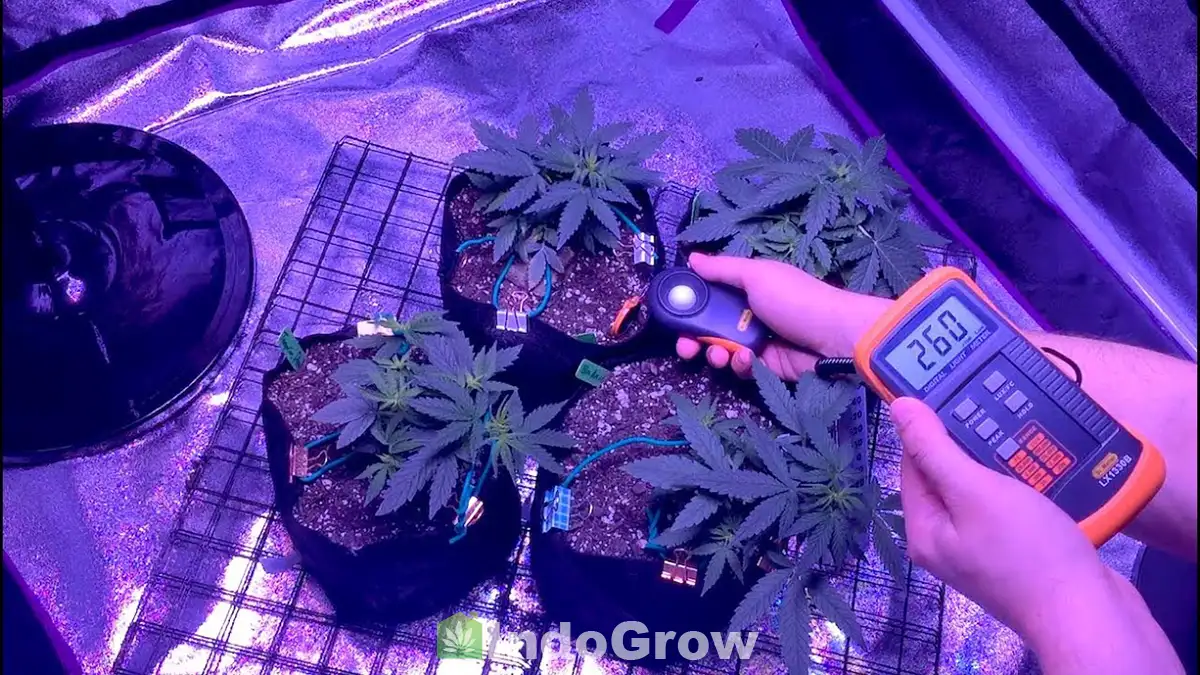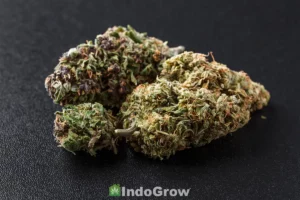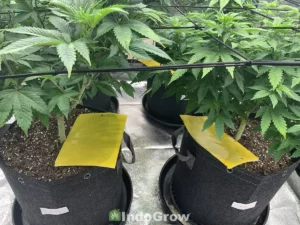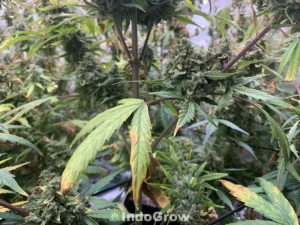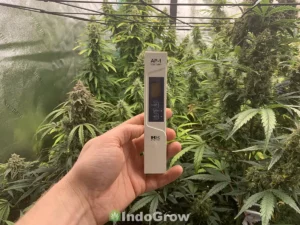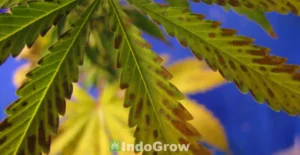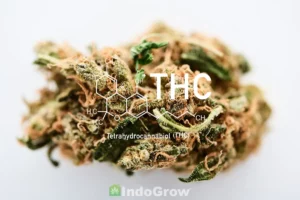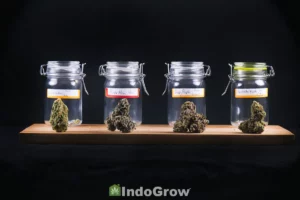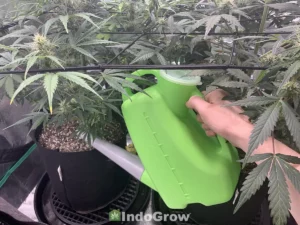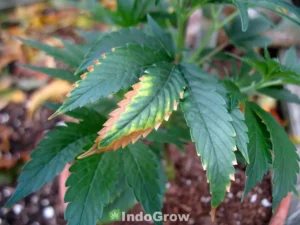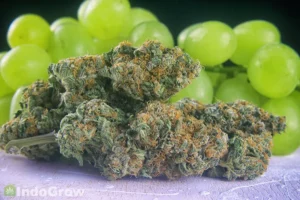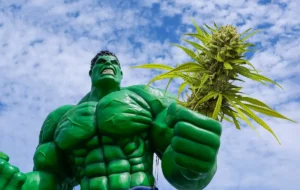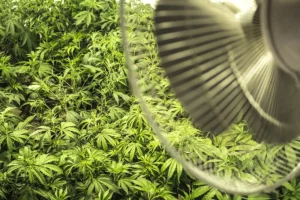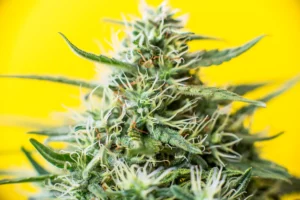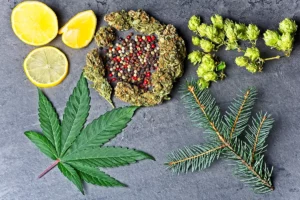Using the best PAR for cannabis will prevent plant problems and maximize the yield and quality of your harvest. PAR, or photosynthetically active radiation, refers to the specific range of light wavelengths (400 to 700 nanometers) that cannabis plants use for photosynthesis.
Providing your cannabis plants with ideal PAR values will help them grow more rapidly and increase the size and quality of their flowers. This article will explain how to PAR, PPF, and PPFD values for optimized cannabis growth and production.
Table of Contents
Why Does PAR Matter for Cannabis?
All plants, including cannabis, require sufficient PAR to photosynthesize. Plants with sufficient PAR will have faster, bushier, and stronger growth, while plants with poor lighting will have leggier, paler, and weaker growth in comparison.
Adjusting PAR values can also affect the quality and quantity of flowers your cannabis plants produce. Optimal PAR for cannabis will lead to denser buds with more cannabinoids and terpenes, giving you superior color, flavor in your flowers. In contrast, plants grown with too much or too little light will have less potent and less flavorful flowers with poor coloration and shape.
Prevent Light Stress
Although light is essential to cannabis growth and survival, too much light can stress and even burn your plants. Symptoms of light burn include upturned leaf tips and yellowing at the top of the plant. A variety of factors may contribute to cannabis light stress, including light intensity, spectrum, distance from plants, and airflow in the grow room.
If you suspect your plant is suffering from light stress, you may need to move your lights further from the plants or adjust their brightness down. Excessive light in the UV and infrared spectrum are more likely to cause problems than PAR/visible light, although large amounts of visible light can also lead to light burn. It is important to note that PAR meters cannot detect infrared or ultraviolet light, so some full spectrum lighting has the potential to burn your plants while displaying a deceptively low PAR/PPFD reading.
Some grow lights are shaped so that PAR is directed down in a narrow cone below the bulb, which can lead to too much light at the crown of the plant and not enough light around sides. This problem can often be solved by increasing the distance between the light and the plant.
Heat buildup can also cause burning on the tops of your plants. If you place your hand above the top of your plants for a few seconds and feel as though the heat is uncomfortable or even painful on your skin, it is too hot for your plants. Consider switching to a cooler bulb type like LEDs, or adding an oscillating fan to increase airflow above your plant and disrupt pockets of hot, still air.
Finally, other problems such as nutrient deficiencies can make cannabis much more sensitive to heat and light. If your plant is exhibiting additional symptoms not commonly associated with light burn, such as damage to the lower leaves or frail stems, you may wish to investigate your ambient temperature, soil pH, or nutrient ratios as well.
Maximize Yield and Quality
Tracking and optimizing PAR for cannabis will help your plants grow faster and produce higher quality flowers. Too little light can cause weak growth and poor flowering, while too much light can cause light burn and pale, wispy buds.
In comparison, plants grown with optimal lighting will grow larger and produce more flowers. Those flowers will also have a greater density of cannabinoids and terpenes, leading to a more potent and flavorful final product.
PAR vs PPF vs PPFD
PAR, PPF, and PPFD are three ways to quantify the output of your lights. Each measurement has its own strengths and weaknesses when it comes to growing cannabis, which will be outlined below.
PAR
PAR (Photosynthetically Active Radiation) refers to the specific range of light wavelengths (approximately 400 to 700 nanometers) that plants can use for photosynthesis. The PAR for cannabis measurement represents the total amount of light energy available for plants to photosynthesize, and it can be expressed in units of energy per unit time. PAR is often expressed using PPF or PPFD, which will be explained in greater detail below.
This measurement is useful for determining how much photosynthetically useful light is reaching your plant. While other wavelengths of light may still subtly affect plant growth and development, only PAR light can be used for photosynthesis in cannabis plants.
PPF
PPF (Photosynthetic Photon Flux) measures the total amount of photosynthetically active photons emitted by a light source per unit time. It measures the light output of a fixture or bulb, regardless of where the light is directed. PPF is typically measured in units of micromoles per second (μmol/s) and represents the overall light production capabilities of a light source.
While PPF is useful for determining the output of a light, it is not a measure of how much of that light is actually reaching your plants. For that, you will have to use PPFD.
PPFD
PPFD (Photosynthetic Photon Flux Density) represents the density/intensity of photosynthetically active photons that reach a particular surface area (such as the plant canopy) per unit time. It differs from PPF in that it measures the amount of light available for photosynthesis at a given location. PPFD is usually expressed in units of micromoles per square meter per second (μmol/m²/s).
PPFD is a helpful metric for assessing the light intensity that cannabis plants receive. For this reason, PAR is commonly expressed using PPFD units.
Cannabis PAR Requirements
Cannabis plants start with relatively low PAR/PPFD requirements as seedlings, which gradually increase throughout the vegetative and flowering stages. Both vegetative and flowering cannabis plants need about 20-40 moles of light per day, but because flowering plants must spend half their day in the dark they require a higher PAR/PPFD than vegetative plants.
As a general rule, you will want to provide 32-50 watts of light per square foot of floor space in your grow room. Lights can be dimmed or moved further from the plant to decrease PAR, while to increase PAR you can turn up lighting intensity, move lights closer, add more reflective surfaces to the grow room, or add more lights.
Best PAR for Cannabis Seedlings
Cannabis seedlings are more sensitive to light than more mature plants, and prefer to receive only 200-300 PPFD of light. In general, you can start with 25% light intensity for seedlings then increase to 50% in the early vegetative stage.
The light distance from the plant will depend on the type of light you are using. Low wattage LEDs (200 watts or less) can be kept as close as 6-12 inches from the plant, while high wattage LEDs and halogen bulbs should be kept 24-36 inches from the plant. Keep an eye on your PPFD readings as well as your plant’s appearance, and adjust the height if your light values seem too high or too low.
Best PAR for Cannabis Vegetative Stage
Vegetative stage cannabis plants should receive 300-600 PPFD of light, with light intensity increasing from approximately 50% to 75% over the course of the vegetative stage. While cannabis can grow fine with as little as 300 PPFD, it will display faster and stronger growth with 500-600 PPFD of light. More light than this can increase growth further, but you run the risk of burning the top of the plant.
Similar to seedlings, ideal light distance will depend on the intensity of your bulbs. The lights will need to be raised as the plant grows taller, and they should usually be somewhere between 18-36 inches above the canopy.
Best PAR for Cannabis Flowering Stage
The ideal PAR range for flowering cannabis plants is 600-1000 PPFD, with light intensity increasing from 75% in early flowering to 100% in mid to late flowering. PPFDs between 1000-1500 will increase growth further when paired with CO2 supplementation, but buds grown under extremely bright light may actually be less potent and dense than those grown under more reasonable light levels.
The distance of your lights from the canopy should continue to increase as your plants mature, with flowering plants generally preferring a distance for 18-36 inches between the canopy and the bulbs.
How to Measure PAR for Cannabis
PAR is measured using a PAR meter, which will give a reading in either PPF (μmol/s) or PPFD (μmol/m²/s). A PPF measurement tells you how much PAR is being emitted by the light, while a PPFD measurement tells you how much PAR is landing on the surface of your plants.
Each PAR meter works a bit differently, and you will have to read the instruction manual to find out how to take and record measurements with your meter. You will want to take multiple initial measurements in the same location to check the accuracy of your meter. Consider taking measurements on the sides and near the base of your plants as well as the canopy to ensure that all parts of your plant have adequate access to light.
Continue to take regular measurements with the meter, as the PPFD reading will change as your plants grow taller and closer to the lights. This will allow you to make adjustments to your lighting throughout the grow instead of just guessing when it’s time to raise your lights or increase/decrease light intensity.
If a proper PAR meter is out of your budget, PAR/PPFD sensing phone apps may work in a pinch. These apps are considerably less accurate than a traditional PAR meter and tend to underestimate light output, but they can tell you if your lighting is in the right ballpark range. Although still not as accurate as a physical meter, one of the best app options is Photone for IOS phones.
When using the PAR meter, remember that it only detects light in the 400-700 nm range, which excludes wavelengths such infrared and ultraviolet light. IR and UV light are excluded from PAR since they are less optimal for photosynthesis, although these light types are still needed for proper growth and development in cannabis.
Conclusion
PAR, or photosynthetically active radiation, is a useful way to quantify the amount of usable light reaching your cannabis plants. PAR is often expressed using PPFD (Photosynthetic Photon Flux Density) and can be measured using a PAR meter.
In general, cannabis seedlings prefer a PPFD of 200-300, vegetative plants prefer 300-600, and flowering plants prefer 600-1000. Providing the correct cannabis PPFD/PAR values will help your plants grow larger and stronger. In addition, cannabis plants grown under PAR optimized lighting will have denser, more potent, and more flavorful buds compared to those grown in light that is too bright or too dim.

Rocky Horton
Author
Rocky Horton is an experienced cannabis grower and the founder of IndoGrow. The IndoGrow editorial team has over four decades of combined growing experience. Learn more.

